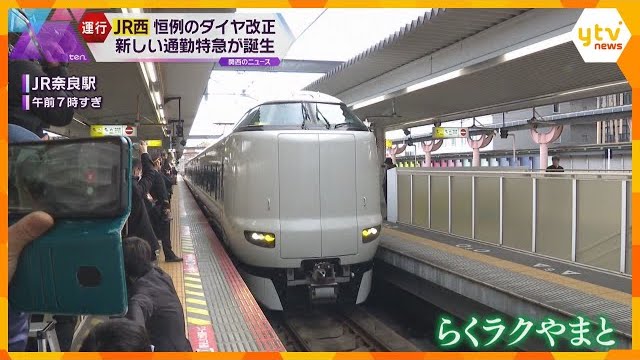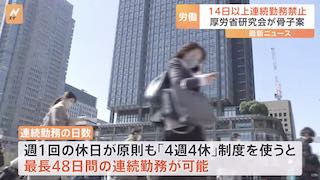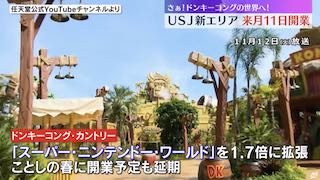NARA, Mar 19 (News On Japan) - The annual March timetable revision for JR has been implemented that includes a new commuter express train coinciding with the opening of the Hokuriku Shinkansen extension.

On the morning of the day, A departure ceremony was held at Nara Station for the commuter express "Raku Raku Yamato" on Monday morning. Connecting Nara to Shin-Osaka via Tennoji, "Raku Raku Yamato" operates as an all-reserved seating service with one round trip during the morning and evening commuting hours on weekdays.
An additional express fare is required, but the service aims to meet the demand for seated commutes. The departure ceremony was held to mark the start of the service.
A child at the event commented, "The front of the train was sleek and cool."
The excitement wasn't limited to the Kansai region. On March 16th, the Hokuriku region was buzzing with excitement.
Reporter Hayato Nakano said, "It's just past 4:30 AM. Many people have lined up in front of Tsuruga Station to welcome the opening day of the Hokuriku Shinkansen extension."
People from all over the country gathered in front of the station, aiming for a glimpse of the first Shinkansen train.
A visitor from Shizuoka Prefecture said, "I've been in line since 9 AM the day before yesterday. I wanted to be the first to board the first train."
The first train of the "Tsurugi" service, connecting Kanazawa and Tsuruga, sold out in less than a minute, while the "Kagayaki" service between Tokyo and Tsuruga sold out in four minutes. Both adults and children were dazzled by the popularity of the new Shinkansen.
However, for those traveling from Kansai to Hokuriku, the journey used to be direct on the "Thunderbird" express to Kanazawa Station, but now requires a transfer at Tsuruga Station. The transfer involves moving between the first and third floors via escalator and navigating crowded ticket gates, adding to the burden.
JR West estimates an 8-minute transfer time and has marked transfer routes with colored floor guides, with staff loudly directing passengers. There were no major disruptions on the first day.
A passenger who transferred said, "The transfer was smoother than expected."
Another commented, "It was confusing. I underestimated Tsuruga."
One traveler missed their connection, saying, "I was late. I went to platform 7 by mistake and had to get my ticket changed by a station attendant."
While the Hokuriku Shinkansen extension has brought convenience, the travel time reduction between Osaka and Fukui stations is just 3 minutes when including the transfer time, with a fare increase of 1,150 yen. The impact diminishes if transfer time increases.
A traveler returning to Kansai from Fukui remarked, "It's brief, but I do feel some inconvenience in transferring."
The Hokuriku Shinkansen extension has generated significant excitement, with expectations for it to be a catalyst for the Hokuriku area, which was affected by the New Year's Day earthquake on the Noto Peninsula.
Source: YOMIURI















